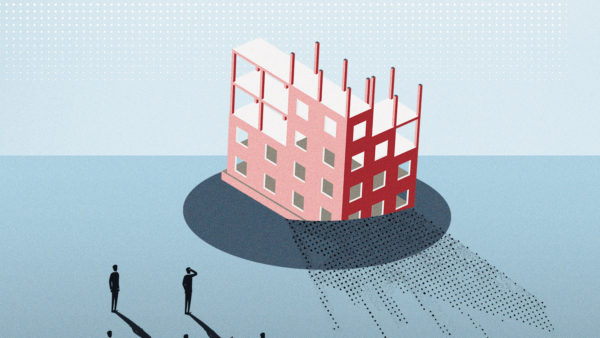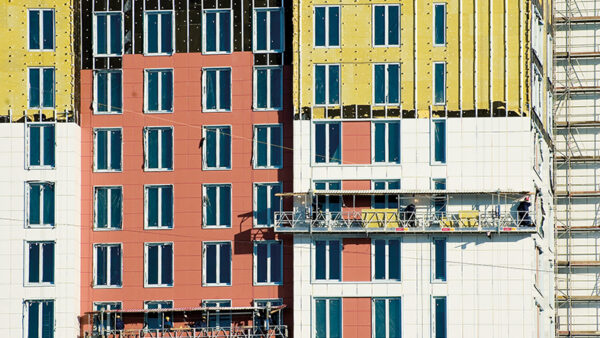
As the CITB’s Kate Lloyd points out, barriers to women’s careers in construction form all around us – popping up in site signage, Lego and even Snickers ads.
According to recent statistics, just over one in 10 of the construction workforce is female, while women make up as little as one per cent of the manual trades. So, in these days of equality of opportunity, what continues to put off many women from pursuing a career in construction?
Perhaps it’s the perception that construction still remains a male domain, a perception that is reinforced by “Danger: Men at Work” signs. Yes, there may be dangers in building sites, but such casual sexism underlines the message that this place is too dangerous for women who, presumably, should be doing something less taxing.
Like a staked vampire that just doesn’t know to stay in its coffin, gender work stereotyping is alive and well and keeping women from joining the sector. Such not-so-subtle messages tell them that this industry is one where they are not welcome. That 11% of the workforce is female is testament to their tenacity and determination to be part of a sector that is one of the key drivers of our economy.
Perhaps it’s not just the industry that’s at fault, however. Ideas and perceptions can become rooted in childhood and be difficult to shake off. Take that children’s favourite, Bob the Builder, whose cheery demeanour and “Can we fix it? Yes we can” catchphrase echoes around primary school playgrounds across the nation.
Bob is undoubtedly inspiring thousands of children in their choice of career when they grow up – if, that is, they are boys. For the girls, the programme’s role model is the main female character Wendy, the token woman who runs the office, keeps the business in order and, oh, often organises tools and equipment for the men. While this is an essential role in the industry, it fails to challenge the stereotype.

Lego’s Research Institute aims to show women in more diverse roles…
Even the anthropomorphic vehicles, with names such as Scoop, Muck, Roley and Travis, have male characteristics and are fuelled by testosterone instead of diesel. Oh, wait, there is one female construction vehicle, Dizzy, a concrete mixer who is eager, curious and easily excited. With friends like these…
This is why last week Lego received acclaim after it unveiled “Research Institute”, its new science-themed set featuring female scientists, their equipment – and no pink outfits. The set, which is being rolled out in August, was proposed to the Danish toy manufacturer by Dr Ellen Koolijman, a Stockholm-based geochemist, and features an astronomer and her telescope, a chemist in a laboratory and a paleontologist with a dinosaur skeleton.
Her other suggested designs for the set include a female construction worker, a fire fighter, a mechanic, a robotics engineer designing a robotic arm and a geologist with compass and hammer in the field.
On her blog Dr Koolijman explains: “As a female scientist I had noticed two things about the available Lego sets: a skewed male/female mini-figure ratio and a rather stereotypical representation of the available female figures. It seemed logical that I would suggest a small set of female mini-figures in interesting professions to make our Lego city communities more diverse.”

… while the Australian Snickers advert reaffirms stereotypes
Such diversity is needed not only in Lego city communities but also real-life industry. Yes, there are hurdles to overcome, not least around improving the working environment, but these are not insurmountable. We need to start in the home, ensuring parents understand how jobs and careers in construction have changed since their childhood and that there are good careers for women with the right qualifications. And we need schools to provide good and up-to-date careers advice to young men and young women. Schools ought to be broadening all young women’s horizons, not just directing them to “hair or care”.
It’s a tough enough job inspiring young people into construction already without backhanded compliments that patronise the sector while appearing to endorse it, courtesy of the recent Snickers Australia advertisement. The ad, which premiered in March, showed construction workers at a Melbourne building site yelling out to career women walking past, “I’d like to show you the respect you deserve!”, “A woman’s place is where she chooses!” and “You know what I’d like to see? A society in which the objectification of women makes way for gender-neutral interaction free from assumptions and expectations”.
Any goodwill evaporates with the ad’s punchline – “You’re not you when you’re hungry”, implying that enlightened thinking and behaviour is alien to the construction industry. Again, with friends like these…
The CITB believes that construction employers have an essential role to play in ensuring that they promote fair, inclusive and respectful practices in the workplace. Inclusion is about making everyone feel that they are a key part of the organisation, especially within the construction industry, where future successes depend on effective teamwork.
Everyone has a role to play in promoting Fairness, Inclusion and Respect in construction, in the same way that everyone is responsible for maintaining health and safety measures in the work environment. What better reason to sign up to the Be Fair initiative? Go to www.citb.co.uk/befair.
We need the whole industry on board and working together – and we will succeed.
Kate Lloyd is fairness, inclusion and respect manager at the CITB











Comments are closed.